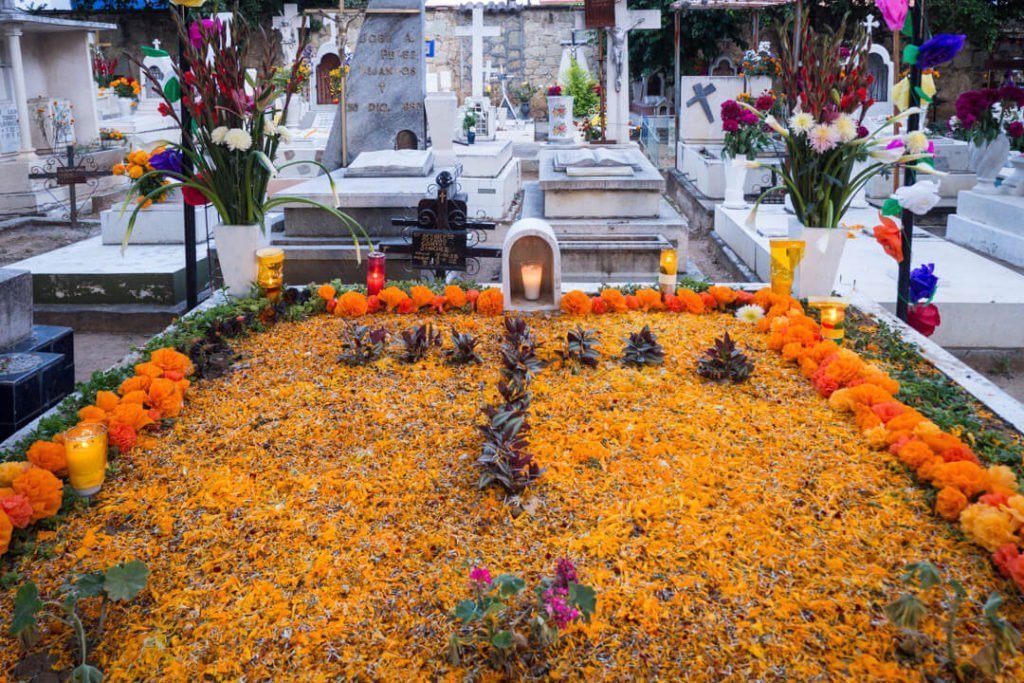
Feliz Día de los Muertos desde Aventura Hispana! Meaning, Happy day of the dead from Aventura Hispana!
El Día de los Muertos, also known as the Day of the Dead, is a Mexican holiday in which families joyfully welcome back the souls of their departed loved ones for a brief and festive reunion. This celebration is a unique blend of Mesoamerican rituals, European religious traditions, and Spanish cultural influences. It takes place annually from October 31 to November 2. While October 31 coincides with Halloween, November 1 and 2 mark All Souls Day and the Day of the Dead, respectively. According to tradition, at the stroke of midnight on October 31, the gates of heaven swing open, allowing the spirits of deceased children to rejoin their families for 24 hours. On November 2, the same invitation extends to the spirits of adult family members.
The Meaning of Día de los Muertos:
Día de los Muertos is not a day of mourning; it’s a celebration of life. It is rooted in a blend of indigenous Mesoamerican and Catholic traditions. The holiday symbolizes a belief that the souls of the deceased return to the world of the living during this time to reunite with their families.
Altars (Ofrendas):

Central to the celebration are ofrendas (offerings), or altars, beautifully adorned with marigolds, candles, incense, sugar skulls, favorite foods, Photo frames and cherished mementos of the departed. These ofrendas are constructed in homes, cemeteries, and public spaces to welcome the spirits back to the earthly realm.
Marigolds (Cempasúchil):

Marigolds play a significant role in this festival. Their vibrant orange and yellow colors are believed to guide the spirits to the ofrendas for which they leave a trail of petals from the cemetary to the ofrenda. Families decorate the altars and graves with marigold petals in intricate patterns.’
Cemetery Visits:

Families visit the graves of their loved ones, where they clean and decorate tombstones with flowers and candles. It’s a time for storytelling, sharing memories, and celebrating the lives of those who have passed.
Calaveras and Calacas:
Calaveras, or sugar skulls, are iconic symbols of Día de los Muertos. These vibrant, intricate confections often bear inscriptions of the names of both the living and deceased loved ones, serving as sweet offerings to the spirits. People also paint their faces as calacas (skeletons) and dress in elaborate costumes to honor the dead.
Pan de Muerto:
During this holiday, bakers craft Pan de Muerto, also known as the “bread of the dead.” This sweet bread takes on a distinct round shape with bone-shaped pieces adorning the top, symbolically representing the circle of life and death. Families share this bread as part of their ofrendas and meals.
Celebration Beyond Mexico:
While Dia de los Muertos has its origins in Mexico, it has become a global celebration of cultural heritage, unity, and respect for the deceased. Communities around the world participate in the festivities, creating altars, hosting parades, and embracing the vibrant traditions.
Día de los Muertos is a remarkable celebration that reminds us of the profound connection between the living and the deceased. It’s a time for laughter, storytelling, delicious food, and beautiful altars that serve as bridges between two worlds. This holiday showcases the Mexican spirit of resilience, cultural richness, and a deep appreciation for life and death. As the candles flicker, the marigolds bloom, and the music plays, this festival invites us to celebrate the lives of those who have come before us, keeping their memory alive in our hearts.
